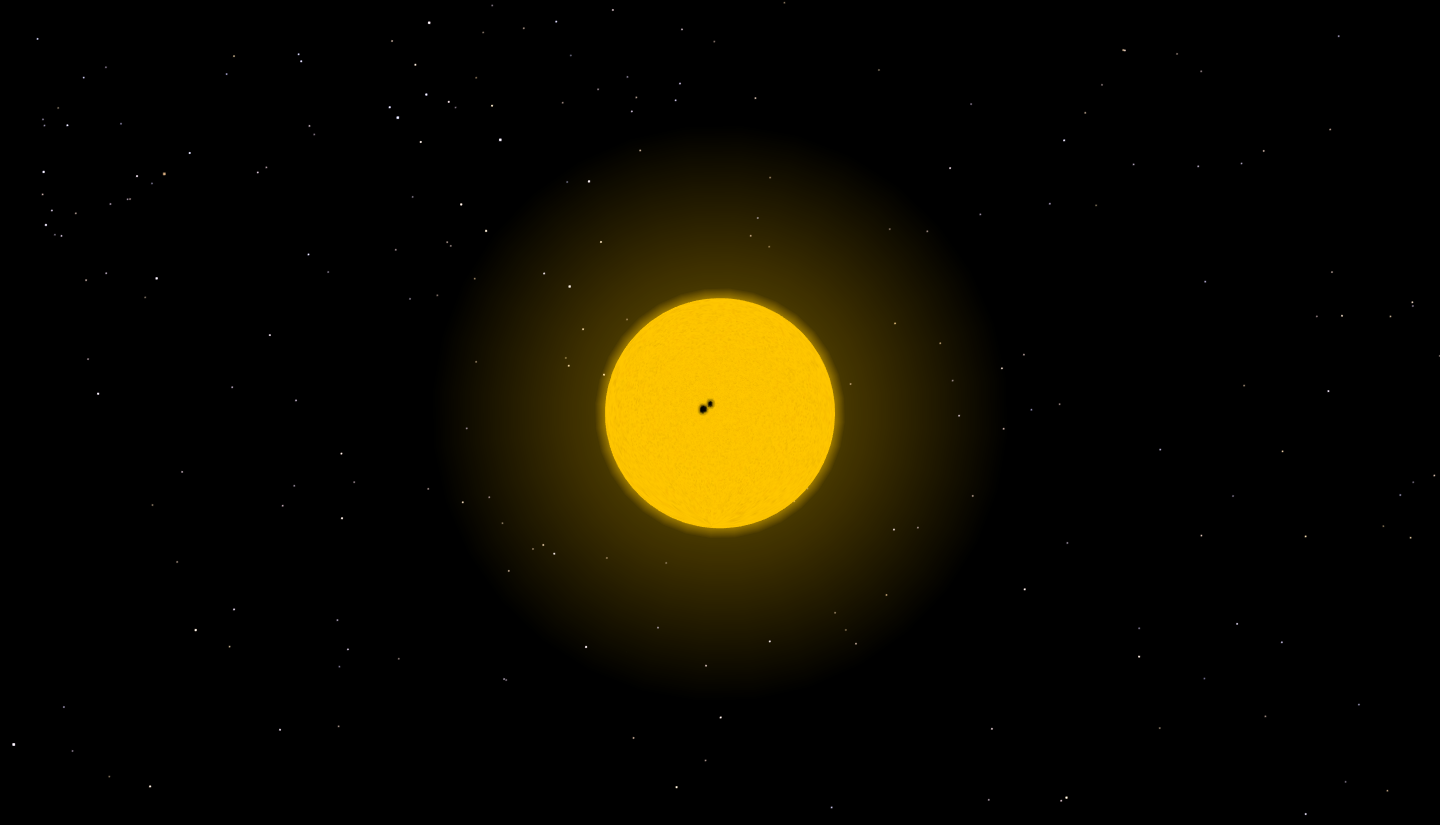On winter evenings, Orion dominates the sky, surrounded by numerous striking constellations, all decorated with brilliant stars. Credit: Starry Night Software
Central in the southern sky is the constellation of Orion the Hunter. Along with the Big Dipper, this is probably the most easily recognized constellation, and the starting place for a stargazing adventure.
We apologize to our readers in the southern hemisphere, where it is summer. But even in the south, Orion dominates the sky right now. Turn the chart upside down, and everything we say will still apply.
Orion itself sits astride the celestial equator, half way between north and south celestial poles. This makes Orion an “equal opportunity” constellation, well seen everywhere on Earth except at the poles.
The main figure of Orion is a large rectangle of four bright stars, including two of the brightest stars in the sky, Betelgeuse at upper left and Rigel at bottom right. These four stars represent the shoulders and knees of a might hunter.
The thing that most people notice first is the diagonal line of bright stars right in the middle of the rectangle, which represent the giant’s belt, worn at a jaunty angle. Hanging from his belt are three stars representing his sword.
If you’re located at a dark sky site, you will be able to see more details in Orion. His rather small pointy head is represented by a triangle of stars. His right arm raises a club and his left arm raises something towards Taurus the Bull. Some legends have this as a lion’s skin, others as a shield.
I like to see Orion as a superhero beset by evildoers on all sides, but also with friends and allies.
Taurus, to his upper right, is marked by a bright red star, Aldebaran, in the midst of the cluster of stars known as the Hyades. A bit higher is a second cluster, the Pleiades. Both clusters are easily seen with the naked eye. Orion is shielding himself from the Bull with his lion’s skin.
Below Taurus, to the right of Orion, is a meandering stream of stars which early astronomers saw as the river Eridanus. This river meanders below the southern horizon for most people in the U.S.A., but those in southern Florida and Texas may catch a glimpse of its destination, the first magnitude star Achernar.
Above the horns of Taurus is Auriga the Charioteer, marked by Capella, the sixth brightest star in the night sky. I see him as the cavalry riding to Orion’s rescue.
Above and to the left of Orion is the constellation Gemini, the Twins, with its two bright stars Castor and Pollux. Currently this is where the planet Jupiter is located, outshining all the stars. So which is Castor and which is Pollux? I remember them because Castor is closest to Capella, both starting with a “C,” while Pollux is closest to Procyon, both starting with a “P.”
Orion, like all good hunters, is accompanied by his two hunting dogs, big and small: Canis Major and Canis Minor. “Canis” means “dog,” “major” means large, and “minor” means “small.”
Each dog contains one bright star: Procyon in Canis Minor and Sirius in Canis Major. There is only one brightish star besides Procyon in Canis Minor, making it more like a hot dog than a real dog. Canis Major is more like a real dog, sitting up with a head, body, and two hind feet. Sirius and Procyon are the first and eighth brightest stars in the night sky, and among the nearest to the sun at 8.6 and 11.4 light years distance respectively.
Between the two dogs is a faint constellation with a long name: Monoceros. “Mono” means “one” and “ceros” means “horn,” so Monoceros is a unicorn. Although it lacks any bright stars, it is one of the richest constellations in deep sky objects, because an arm of the Milky Way lies in this direction.
What is beneath Orion’s feet? Usually called Lepus the Hare, I like to think of this as Monty Python’s Killer Rabbit, yet another foe for our hero to vanquish.
Everything I’ve described can be seen with the unaided eye, even in fairly light polluted skies. If you have binoculars or a small telescope, there are incredible riches to be discovered, such as the clouds of glowing gas in Orion and Monoceros, the star clusters of Taurus, Auriga, Monoceros, and Canis Major, and the galaxies of Eridanus.










